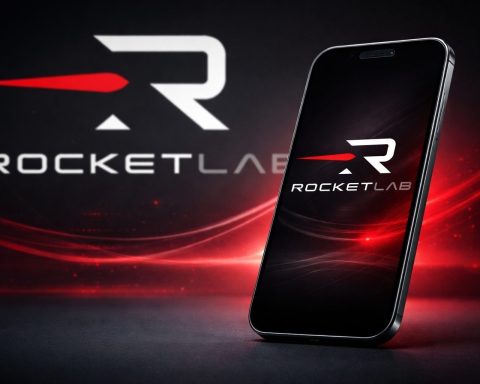Major Satellite Launches and Deployments (Aug 22–23, 2025)
- SpaceX Launches X-37B Military Spaceplane: SpaceX kicked off a launch double-header by lofting the U.S. Space Force’s secretive X-37B space plane on its eighth mission [1] [2]. A Falcon 9 rocket lifted off from Kennedy Space Center on Aug. 21 at 11:50 p.m. EDT (03:50 UTC Aug. 22), successfully landing its first-stage booster minutes later [3]. The 29-foot uncrewed spaceplane (built by Boeing) carries cutting-edge payloads – “next-generation technologies including laser communications and the highest-performing quantum inertial sensor ever tested in space,” Space Force officials said [4]. The quantum sensor could enable ultra-precise navigation even when GPS is unavailable, a capability General Chance Saltzman called “an important step…strengthen[ing] the resilience…and data transport speeds of our satellite communications architecture” [5] [6]. Much of OTV-8’s mission remains classified, but its success underlines SpaceX’s growing role in national security launches.
- SpaceX Adds 24 Starlink Satellites (100+ Launches in 2025): Barely 12 hours after the X-37B flight, SpaceX launched another Falcon 9 on Aug. 22 from Vandenberg SFB, deploying 24 Starlink internet satellites [7]. This West Coast mission marked the 1,800th Starlink satellite launched in 2025 alone [8], highlighting SpaceX’s rapid cadence. (On Aug. 17, SpaceX’s 100th Falcon 9 flight of the year had already lofted a prior Starlink batch [9].) The Aug. 22 booster landing notched yet another reuse milestone, as SpaceX continues to churn out near-daily launches. The Starlink constellation now exceeds 8,000 active satellites [10] [11], bolstering global broadband coverage and underscoring SpaceX’s dominance in commercial launch activity.
- Blue Origin’s NS-35 Carries 200th Payload: Jeff Bezos’ Blue Origin returned to flight on Aug. 23, targeting 8:30 a.m. EDT for liftoff of its 35th New Shepard suborbital mission (NS-35) [12]. This uncrewed flight – the first New Shepard mission since earlier in the month – is carrying over 40 scientific and educational payloads, including 24 student experiments from NASA’s TechRise Challenge on topics like plant cultivation in microgravity and fluid physics [13]. The booster “RSS H.G. Wells” will propel the capsule past the Kármán line (~100 km up) before both return for recovery [14]. Notably, NS-35 will loft Blue Origin’s 200th payload to space [15], a milestone reflecting increased suborbital research interest. The mission’s mix of school experiments, university research, and tech demos (from groups like Johns Hopkins APL and Teledyne) shows how suborbital flights are expanding R&D access. Blue Origin’s live webcast is slated to stream the 10-minute flight as the company works to restore a regular launch tempo.
- Rocket Lab’s 70th Launch “Live, Laugh, Launch”: Small-satellite launcher Rocket Lab is set to mark its 70th Electron mission on Aug. 23 with a cleverly-titled flight “Live, Laugh, Launch” [16]. Scheduled at 22:30 UTC (Aug. 24 NZST) from Launch Complex 1 in New Zealand, this dedicated mission will deploy five satellites into a 655 km orbit for a confidential commercial customer [17]. Coming less than three weeks after Rocket Lab’s previous launch, it demonstrates an accelerating cadence in the small launch sector [18]. The company touts Electron as “the world’s most frequently launched small-lift rocket,” providing responsive orbit insertion for smallsat customers [19]. This launch also preludes the opening of Rocket Lab’s new Launch Complex 3 in Virginia for its upcoming Neutron medium-lift rocket [20]. With Electron flights continuing at record pace and the larger reusable Neutron rocket on the horizon, Rocket Lab is cementing its role in the diversified launch market.
New Space Technologies and Innovations in Orbit
- Laser Comms & Quantum Nav Tested in Orbit: The X-37B mission launched by SpaceX is not just notable for secrecy – it’s pushing technological frontiers. Aboard OTV-8, the U.S. Space Force is “conduct[ing] laser-communications tests involving proliferated commercial satellite networks in low Earth orbit,” demonstrating more secure, high-bandwidth links [21]. This likely involves laser cross-links with constellations like Starlink, leveraging their “proliferated” presence [22]. Meanwhile, the onboard quantum inertial sensor – the most advanced ever sent to space – will gauge acceleration and rotation using quantum physics, potentially enabling precise navigation without GPS [23]. “This technology is useful for navigation in GPS-denied environments…enhanc[ing] navigational resilience…in the face of current and emerging threats,” Space Force officials explained [24]. If successful, these experiments could pave the way for more resilient military spacecraft that communicate and navigate independent of ground systems.
- First Reprogrammable Navigation Satellite Launched: In a historic leap for satellite design, the U.S. Space Force deployed the NTS-3 (Navigation Technology Satellite-3) – an experimental reprogrammable GPS satellite – on Aug. 12. United Launch Alliance’s new Vulcan Centaur rocket carried NTS-3 to geosynchronous orbit, the first national security payload on Vulcan [25] [26]. NTS-3 is the first DoD navigation experiment in 48 years [27] and will spend a year testing 100+ advanced Positioning, Navigation and Timing (PNT) experiments to upgrade GPS capabilities [28] [29]. Built by L3Harris for AFRL, the satellite features an electronically steered phased-array antenna that can direct GPS signals on the fly and “focus powerful beams to ground forces in combat jamming environments” [30]. Crucially, NTS-3 has an on-orbit reprogrammable architecture, meaning software updates and new signals can be uploaded after launch to counter evolving threats [31]. “We don’t have to have everything planned out before we go on orbit…we’re pairing that with reprogrammable user equipment able to receive new signals…even after launch,” said AFRL’s Joanna Hicks [32] [33]. This flexibility will help the Pentagon future-proof its navigation systems. NTS-3 will also trial advanced anti-spoofing waveforms and autonomous operations, informing the design of next-gen GPS IIIF satellites and potential multi-orbit nav constellations [34] [35]. Beyond its tech payload, NTS-3’s launch itself was a milestone – proving Vulcan’s long-awaited capability after years of development, a fact Col. Jim Horne called “an important milestone for the Space Force and all involved” [36].
- Starship Super Heavy Preps for Next Flight: SpaceX’s focus is also shifting to Starship, its next-generation fully-reusable spacecraft. On Aug. 22, the company rolled a Super Heavy booster to the pad in Boca Chica, Texas to prepare for Starship Flight 10, targeted for August 24 [37]. This orbital test flight will further demonstrate the massive two-stage Starship system that SpaceX envisions for Mars colonization and lunar missions. Each Super Heavy booster is 230 feet tall and packed with 33 methane-fueled Raptor engines. Flight 10 aims to build on earlier tests to achieve a controlled orbital launch and validate Starship’s re-entry capabilities [38]. The imminent test has space enthusiasts buzzing, as Starship’s success could be transformative – enabling unprecedented payload sizes, deep-space crewed missions, and dramatically lower launch costs. SpaceX’s rapid prototyping approach has seen Starship prototypes iterate quickly; a successful Flight 10 would bring Elon Musk’s vision of interplanetary transport one step closer. (Notably, regulators have been watching closely – previous Starship flights required FAA reviews – but SpaceX’s pad preparations indicate clearance for the next attempt is near [39].) The coming days will show whether the world’s most powerful rocket can finally achieve a clean orbital flight, a milestone with enormous implications for NASA’s Artemis plans and commercial space travel.
Government Policy and Funding Developments
- South Africa Moves to Welcome Starlink: In a significant regulatory shift, South Africa is reviewing telecom rules that have until now barred SpaceX’s Starlink satellite internet from operating domestically. The country’s post-apartheid Black Economic Empowerment (BEE) laws require 30% local ownership for telecom providers – a hurdle Starlink has refused, with Elon Musk calling the equity demand “openly racist” [40]. Now, South Africa’s communications minister Solly Malatsi has proposed allowing “equity-equivalent” investment programs instead of mandating ownership stakes [41]. The government is sifting through 19,000 public comments on the proposed rule change [42]. SpaceX supports the reforms, suggesting it could meet empowerment goals by investing in infrastructure or digital inclusion projects rather than ceding shares [43] [44]. Proponents argue satellite broadband will be a game-changer for connectivity in rural South Africa [45]. However, the plan has sparked sharp criticism from opposition parties and civil society groups, who accuse officials of “rewriting laws” to favor a foreign billionaire at the expense of BEE principles [46] [47]. Despite being Africa’s largest economy, South Africa is notably absent from Starlink’s coverage (even as 17 African nations, including neighbors like Namibia and Botswana, already host the service) [48]. The outcome of this policy review will determine if South Africans gain access to Starlink’s high-speed internet – and could set a precedent for balancing investment vs. ownership in telecom policy.
- US Commits Funding to Artemis Moon Program: In Washington, lawmakers moved to shore up NASA’s deep-space exploration budget, countering proposed cuts. A sweeping tax-and-spending bill (H.R. 1 “One Big Beautiful Bill”) passed in July and signed on July 4 allocates $9.995 billion through 2032 for NASA’s Artemis Moon-Mars initiatives [49]. This includes $4.1 billion specifically for Space Launch System (SLS) rockets for Artemis 4 and 5, mandating at least $1.025 billion per year from 2026–2029 [50]. An additional $20 million is set aside for the Orion spacecraft to be used on Artemis 4 [51]. These provisions directly override the White House’s FY2026 budget proposal, which had sought to wind down SLS and Orion after Artemis III [52]. Congress also safeguarded the Gateway lunar space station, providing $2.6 billion (at least $750 million per year for FY26–28) to ensure this international project (with partners Europe, Japan, Canada, UAE) stays on track [53]. By preserving funding for Artemis elements that were on the chopping block, lawmakers signaled bipartisan support for NASA’s return to the Moon. The bill further included $1.25 billion for the ISS (through 2029) to maintain operations and a $325 million contract for SpaceX’s ISS deorbit vehicle to safely retire the station in 2030 [54] [55]. Investments were also earmarked for NASA facilities (e.g. $300M for Johnson Space Center) and even an $85M provision to relocate a Space Shuttle for museum display [56] [57]. This surge of funding – arriving via an unusual reconciliation process – ensures NASA’s human spaceflight programs can continue on schedule, even as the agency faces broader budget constraints. It reflects a notable political consensus to push ahead with Artemis, sustaining momentum toward a lunar landing and eventually Mars.
- Easing of Space Regulations in the US: The U.S. government is also taking steps to streamline space regulations and bolster commercial space activity. In early 2025, President Donald Trump used his second inaugural address to double-down on ambitious goals like sending “astronauts to Mars”, and followed up in February with executive orders aimed at reducing regulatory friction and modernizing space policy [58]. These actions align with a broader strategy of fostering public-private partnerships and making it easier for companies to launch satellites and missions. For example, efforts are underway to reform outdated licensing processes for launches and spectrum use, and to implement a “single window” for commercial space approvals. The administration’s pro-space stance has been welcomed by industry leaders, who see clearer rules and faster permitting as critical to innovation. Beyond the U.S., other nations are also revisiting space policies – from export controls to orbital debris mitigation – as the new space economy expands. Together, these policy shifts aim to maintain a competitive edge in the “rapid commercialization of space,” recognizing that government and industry must work in tandem to advance human and robotic exploration [59] [60].
Space Science and Astronomy Highlights
- Brightest Fast Radio Burst Pinpointed: Astronomers have captured an unprecedented cosmic signal – the brightest fast radio burst (FRB) ever detected, and for the first time pinpointed its exact origin. The millisecond-long flash, officially FRB 20250316A and nicknamed “RBFLOAT” (“Radio Brightest Flash Of All Time”), erupted with more energy than our Sun emits in its entire lifetime [61] [62]. Detected in March by Canada’s CHIME radio telescope array, this FRB was traced to a tiny region (~45 light-years wide) in the spiral galaxy NGC 4141, about 130 million light-years away [63] [64]. Localizing an FRB to such a precise spot is a game-changer – comparable to spotting a coin from 100 km – made possible by CHIME’s new “outrigger” telescopes across North America [65]. “This result marks a turning point: instead of just detecting these mysterious flashes, we can now see exactly where they’re coming from,” said team lead Amanda Cook of McGill University [66]. Knowing the source environment will help scientists test theories about what powers FRBs – whether it’s highly magnetized neutron stars (magnetars), colliding stellar remnants, or something entirely new [67] [68]. Researchers noted that RBFLOAT’s extreme luminosity and precise localization “opens the door to discovering whether [FRBs are] caused by dying stars, exotic magnetic objects, or something we haven’t thought of yet.” [69] This breakthrough ushers in a “new era” of FRB science [70], where mysterious cosmic radio bursts can be studied in detail rather than just detected in passing.
- Bizarre Supernova Reveals Stripped Star: In other stellar news, scientists have identified a strange new type of supernova that was essentially a “star stripped to the bone” before it exploded [71]. In a paper published Aug. 20 in Nature, a team led by Steve Schulze (Northwestern Univ.) describes supernova SN 2021yfj, 2.2 billion light-years away, which lacked the usual light elements (hydrogen/helium) seen in star explosions [72] [73]. Instead, its signature was rich in heavier elements like silicon and sulfur – evidence that the progenitor star somehow shed its outer layers, exposing its inner core before detonation [74]. “This is the first time we have seen a star that was essentially stripped to the bone,” Schulze said [75]. The finding provides a direct look into a star’s interior, offering clues about the layered structure of massive stars and how they die [76]. Co-author Adam Miller marveled at how “nothing [in our textbooks] fully captures everything produced in nature”, suggesting more exotic pathways to stellar death than previously known [77]. This oddball supernova might result from a binary companion or extreme stellar winds that peeled the star like an onion. Regardless, it’s a boon for astrophysicists: by studying the guts of a star mid-explosion, they can refine models of supernova mechanics and element formation. The discovery underscores that the cosmos still holds surprises that challenge our assumptions about how stars live and die.
- Russian Biosatellite Sends Creatures to Orbit: While human spaceflight often grabs headlines, Russia has embarked on a different kind of life-science mission – launching a mini “zoo” of animals and microbes to orbit. On Aug. 20, Roscosmos launched the Bion-M No. 2 biosatellite aboard a Soyuz rocket from Baikonur, Kazakhstan [78]. The satellite is carrying 75 mice, 1,000 fruit flies, and various microorganisms, cell cultures, and plant seeds for a 30-day orbiting biology experiment [79]. This mission is the long-delayed successor to Russia’s Bion-M No. 1 flight in 2013 (and the earlier Bion program of the ’80s-’90s) [80]. By keeping the rodents and other organisms in microgravity for a month, scientists will study the effects of spaceflight on physiology, development, and genetics – data crucial for understanding long-term human stays in space. Notably, Bion-M 2 is flying a polar orbit to expose the organisms to higher cosmic radiation levels than previous missions, to better simulate deep-space conditions [81]. The mission had been slated for 2016–17 but faced numerous delays [82]; its launch now is “finally ready…off the ground at long last” as one analyst put it [83]. If all goes well, the capsule will re-enter after a month and be recovered in Siberia, allowing scientists to examine the mice and other samples. This effort, involving Russian Academy of Sciences institutes, continues a legacy of space bioscience – from Soviet-era missions with rats and reptiles to NASA’s 2020s rodent research on the ISS – all aimed at unravelling how spaceflight impacts living creatures. Such studies are stepping stones for future crewed expeditions to the Moon, Mars and beyond, where humans will rely on knowledge of how microgravity and radiation affect biology.
International Collaboration and Space Industry Trends
- Geely’s Satellite Launch Underscores New Space Players: In a sign of the times, a major automaker – China’s Geely – has launched its own satellites to orbit, underlining the blurring lines between industries in space. Geely’s aerospace subsidiary Geespace conducted its fourth orbital launch earlier this month, lofting 11 satellites and expanding its low-Earth orbit constellation from 30 to 41 satellites [84]. By year’s end, Geespace plans to have 72 satellites in orbit, achieving near-global coverage (minus polar regions) for its network [85]. While Geespace provides general IoT and connectivity services via telecom partners in 20+ countries, its unique angle is automotive: Geely is integrating satellite connectivity with advanced driver-assistance systems in its cars to enable precise navigation and vehicle-to-space communication [86] [87]. This makes Geely the only global carmaker with a dedicated satellite constellation – an ambitious vertical integration aimed at giving its vehicles a technological edge. “Geely has the reach, it has the capital, and obviously it has the capability to put satellites into orbit,” says Tu Le of Sino Auto Insights [88]. Geely’s parent company (which owns Volvo, Lotus, and part of Mercedes-Benz) clearly sees space as strategic to dominating the future auto industry. “There is no doubt that Geely has international ambitions…This just reinforces the mindset that Geely is going to be a global player,” Tu Le added [89]. The move reflects a broader trend of non-traditional players (from car manufacturers to tech giants) entering the space arena to secure connectivity, data, and services for their core businesses. It also aligns with China’s national strategy encouraging commercial space growth – Geely’s launch was domestically developed and adds to China’s fast-growing private space sector.
- Satellite Internet Race Heats Up Globally: The past two days’ news makes clear that the battle for satellite broadband dominance is now truly international. SpaceX’s Starlink continues its breathtaking deployment (launching hundreds of satellites per month), but China is racing to catch up with its own mega-constellations. Chinese entities are intensively launching “Guowang” and “Qianfan” satellites every month, positioning these fleets as key non-American competitors to Starlink [90]. Backed by state and private investment, China’s planned constellations aim to deploy tens of thousands of satellites to provide global internet coverage, strengthening China’s digital economy and reducing reliance on foreign networks [91] [92]. In August, China launched a batch of internet satellites from Wenchang and Taiyuan as part of this push [93] [94]. Likewise, Amazon’s Project Kuiper – which saw its first test satellites launched in 2023 – is preparing for full deployment of a 3,200-satellite constellation to compete in the broadband market [95]. OneWeb (UK/India-backed) is already offering service with ~600 satellites in orbit, and other regional players are emerging. This scramble is driving “a true satellite boom this year,” as one industry analysis noted. The number of active satellites in orbit has surged by over 30% in just the first half of 2025, with projections approaching 13,000 active satellites by year-end [96] [97]. SpaceX alone conducted 87 launches in the first seven months of 2025, deploying 1,320 of its own satellites (nearly 1,000 of those Starlinks) in that span [98] – an unprecedented pace that’s breaking all records for satellite deployment. This feverish activity reflects how commercial space companies are now the driving force behind the expansion of orbital infrastructure. The “proliferated space networks” referenced by military leaders [99] are becoming reality, bringing both opportunities (global connectivity, new services) and challenges (crowded orbits, space debris management). International coordination will be tested as networks like Starlink, Guowang, and Kuiper all vie for orbital slots and spectrum. For consumers and governments, however, the competition is largely positive – promising faster internet to remote areas and redundancy in communications worldwide.
- Space Economy Soars to New Heights: These developments underscore the robust growth of the global space economy, which reached an estimated $570 billion in 2023, nearly double its size a decade ago [100] [101]. This ~7.4% year-on-year growth continues a steady ~7% annual expansion of the sector [102]. Notably, almost 80% of space revenue now comes from commercial activity (satellite services, launch providers, spacecraft manufacturing, etc.), as opposed to government programs [103]. Both government and private spending are expected to keep climbing, with forecasts suggesting the space economy could hit $1–2 trillion by 2040 if trends hold [104]. Key drivers include declining launch costs (thanks to reusable rockets by SpaceX, Blue Origin, etc. [105]), smaller and cheaper satellites, and rising demand for satellite data and communication. Reusable launch tech has made a dramatic impact – from virtually zero reusable launches 10 years ago to now being routine – enabling more frequent and affordable access to orbit [106]. In 2023, a record 2,664 spacecraft were launched worldwide (up from just ~120 launches per year a decade ago), and 2025 is on track to set another record [107]. Meanwhile, governments are adapting strategies to this new paradigm: forging public-private partnerships (like NASA buying commercial lunar lander services), updating regulations, and investing in space infrastructure to support industry growth [108]. For instance, Europe is investing in new launch sites (such as Norway’s Andøya spaceport set to host small launchers) and contemplating an EU satellite constellation; India is opening its launch range to private rockets; and the U.S. Space Force is contracting more services from startups. Space is becoming a truly global, multi-sector marketplace, from mega-constellations beaming internet, to Earth observation satellites aiding climate monitoring and agriculture, to planned space tourism and resource extraction ventures. Market trends over this 48-hour news cycle reinforce that the space industry’s momentum is only accelerating, fueled by a virtuous cycle of innovation, investment, and competition. As venture capitalist Dylan Taylor quipped recently, “In space, everything is looking up” – and the past two days of news affirm that the sky is no longer the limit for the world’s spacefaring ambitions.
Sources: SpaceX/Space Force launch updates [109] [110]; Spaceflight Now [111] [112]; Space.com News [113] [114]; Keeptrack.space briefs [115] [116]; SatNews (Aug 19, 2025) [117] [118]; Business Insider Africa [119] [120]; DefenseScoop [121] [122]; Wired [123] [124]; PwC Space Report [125]; Space.com Astronomy reports [126] [127]; Roscosmos biosatellite release [128].
References
1. www.space.com, 2. www.space.com, 3. www.space.com, 4. www.space.com, 5. www.space.com, 6. www.space.com, 7. keeptrack.space, 8. keeptrack.space, 9. spaceflightnow.com, 10. www.space.com, 11. keeptrack.space, 12. www.space.com, 13. www.space.com, 14. www.space.com, 15. www.space.com, 16. news.satnews.com, 17. news.satnews.com, 18. news.satnews.com, 19. news.satnews.com, 20. news.satnews.com, 21. www.space.com, 22. www.space.com, 23. www.space.com, 24. www.space.com, 25. defensescoop.com, 26. defensescoop.com, 27. defensescoop.com, 28. defensescoop.com, 29. defensescoop.com, 30. defensescoop.com, 31. defensescoop.com, 32. defensescoop.com, 33. defensescoop.com, 34. defensescoop.com, 35. defensescoop.com, 36. defensescoop.com, 37. keeptrack.space, 38. keeptrack.space, 39. keeptrack.space, 40. africa.businessinsider.com, 41. africa.businessinsider.com, 42. africa.businessinsider.com, 43. africa.businessinsider.com, 44. africa.businessinsider.com, 45. www.moneyweb.co.za, 46. africa.businessinsider.com, 47. africa.businessinsider.com, 48. africa.businessinsider.com, 49. spaceflightnow.com, 50. spaceflightnow.com, 51. spaceflightnow.com, 52. spaceflightnow.com, 53. spaceflightnow.com, 54. spaceflightnow.com, 55. spaceflightnow.com, 56. spaceflightnow.com, 57. spaceflightnow.com, 58. www.pwc.com, 59. www.pwc.com, 60. www.pwc.com, 61. www.space.com, 62. www.space.com, 63. www.space.com, 64. www.space.com, 65. www.space.com, 66. www.space.com, 67. www.space.com, 68. www.space.com, 69. www.space.com, 70. www.yahoo.com, 71. www.space.com, 72. www.space.com, 73. www.space.com, 74. www.space.com, 75. www.space.com, 76. www.space.com, 77. www.space.com, 78. www.space.com, 79. www.space.com, 80. www.space.com, 81. www.space.com, 82. www.space.com, 83. www.space.com, 84. www.wired.com, 85. www.wired.com, 86. www.wired.com, 87. www.wired.com, 88. www.wired.com, 89. www.wired.com, 90. maxpolyakov.com, 91. maxpolyakov.com, 92. maxpolyakov.com, 93. www.youtube.com, 94. www.facebook.com, 95. www.space.com, 96. maxpolyakov.com, 97. maxpolyakov.com, 98. maxpolyakov.com, 99. www.space.com, 100. www.pwc.com, 101. www.pwc.com, 102. www.pwc.com, 103. www.pwc.com, 104. www.pwc.com, 105. www.pwc.com, 106. www.pwc.com, 107. www.pwc.com, 108. www.pwc.com, 109. www.space.com, 110. www.space.com, 111. spaceflightnow.com, 112. spaceflightnow.com, 113. www.space.com, 114. www.space.com, 115. keeptrack.space, 116. keeptrack.space, 117. news.satnews.com, 118. news.satnews.com, 119. africa.businessinsider.com, 120. africa.businessinsider.com, 121. defensescoop.com, 122. defensescoop.com, 123. www.wired.com, 124. www.wired.com, 125. www.pwc.com, 126. www.space.com, 127. www.space.com, 128. www.space.com










